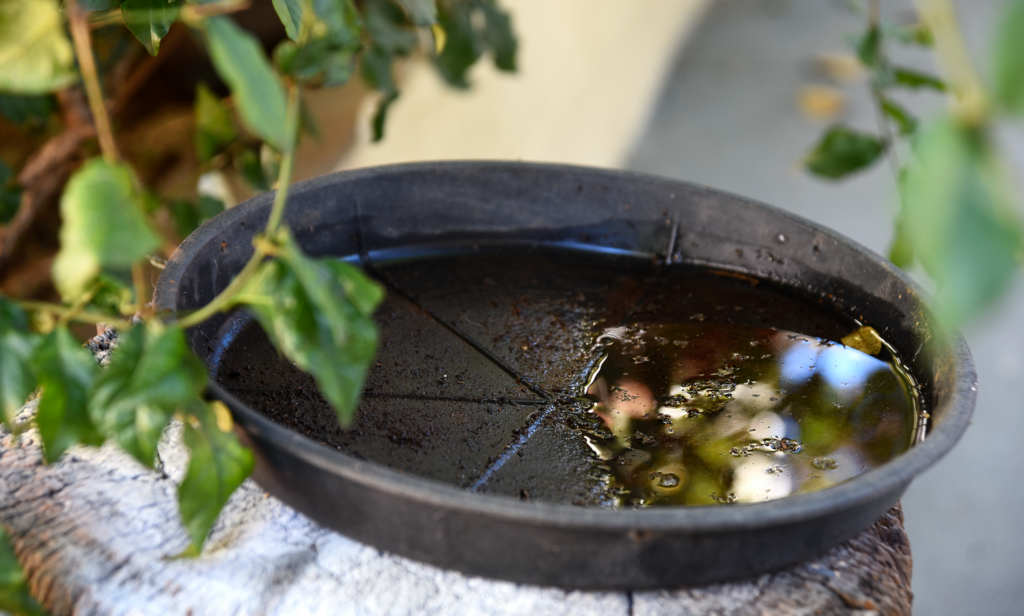Reducing Mosquito Breeding Habitats
In my local community of Ruston, Louisiana, my biggest concern as a mosquito biologist is not the Culex species that is associated with West Nile Virus (WNV), but the Aedes albopictus species of mosquitoes (and Aedes aegypti, which we no longer have in Ruston).
I don’t want to downplay Culex species and the potentially deadly role they play in the transmission of many diseases, but I do want to make you aware of Aedes mosquitoes and how they are potentially life threatening as well. Dengue (den’ gee) and Chikungunya (chik-en-gun-ye) are two of the newest mosquito-borne viruses to hit the United States, and they are vectored by mosquitoes we have right here in Ruston, LA.
I have been with VDCI since the start of our services in my hometown of Ruston, LA. Part of my job is to track mosquito populations and species throughout the city. While we have experienced some WNV, we have been able to locate most of the large source breeding spots of Culex and work with the City of Ruston to clean up and clean out these areas for permanent source reduction. This has greatly increased our ability to manage the Culex populations in Ruston. Credit goes to the City for their willingness to work with us on these types of projects, because unfortunately, most cities do not have the ability or desire to undertake such tasks. While I have watched the Culex population dwindle in this area, I have also seen Aedes albopictus populations grow to large numbers. Knowing that we have the vectors (mosquitoes that are competent in the transmission of a virus), we decided that we should do some proactive work in getting these mosquitoes to manageable numbers.

There are many challenges that we face in managing Ae. albopictus. The first challenge is that most of these mosquitoes are grown by the residents that live here. If you have standing water in any container around your home — most people do and don’t even realize it — in a matter of a few days these mosquitoes will start hatching off. Another challenge is that these mosquitoes are active during the daylight hours. The majority of mosquitoes are active after the sun goes down; therefore, in order to get the best results with our treatment applications, we target our spray missions at night when they’re active and non-target organisms are not. Since Ae. albopictus are not active in the evening hours, we miss our opportunity to control them with our adulticide products. However, not all Ae. albopictus are home-grown: many are growing in litter, tires, and other artificial containers that are scattered throughout abandoned properties, wooded areas, and even some roadside ditches (especially in neighborhoods that aren’t as well maintained).
You may be asking why we don’t spray during the daytime hours when this pesky mosquito is active. There are a few reasons for that. First, as any good mosquito biologist would tell you, it should always be used as a last resort in controlling any mosquito population. Second, we do most of our spraying after the sun goes down in part due to the inversion factor. The inversion factor simply means that throughout the day heat is released from the asphalt and concrete that make up our roads. After the sun goes down, a layer of cooler air settles over the ground and traps the air close to the surface, rather then allowing it to continually rise up. Because our trucks are calibrated so that each droplet of chemical delivers a lethal dose to each flying mosquito it comes in contact with, we need these droplets to remain airborne for as long as possible. So, spraying during the daytime hours would diminish the amount of time the product is available, as well as be more harmful to non-target insects.

Earlier in the year, we asked the City of Ruston if they would be willing to work with us on a volunteer and community outreach project, one that would help clean up one of our neighborhoods by gathering trash and tires. By removing tires from the area, we permanently remove major breeding sources of Ae. albopictus. We planned our event to be held in a park local to the neighborhood that we were targeting. In a matter of four hours, we collected 96 tires and 4 bags of trash! In return for those who volunteered to help, VDCI provided a hot dog meal and distributed as much educational material on mosquitoes as one could want! Since our event, we have been contacted by other neighborhoods in Ruston that want us to do have a similar tire drive for their area. It is very exciting to watch people volunteer to make a difference and learn some helpful tips about what they can do to control the mosquito population in their own backyards. The event was a huge success and we look forward to hosting similar events throughout the communities we serve.
Should you have any questions regarding source reduction or would like more information about partnering in a ‘Fight the Bite for a Bite’ event, please contact Vector Disease Control International (VDCI).
Contact Us to Learn More About Effective Mosquito Management Strategies:
 Since 1992, Vector Disease Control International (VDCI) has taken pride in providing municipalities, mosquito abatement districts, industrial sites, planned communities, homeowners associations, and golf courses with the tools they need to run effective mosquito control programs. We are determined to protect the public health of the communities in which we operate. Our mosquito control professionals have over 100 years of combined experience in the field of public health, specifically vector disease control. We strive to provide the most effective and scientifically sound mosquito surveillance and control programs possible based on an Integrated Mosquito Management approach recommended by the American Mosquito Control Association (AMCA) and Centers for Disease Control and Prevention (CDC). VDCI is the only company in the country that can manage all aspects of an integrated mosquito management program, from surveillance to disease testing to aerial application in emergency situations.
Since 1992, Vector Disease Control International (VDCI) has taken pride in providing municipalities, mosquito abatement districts, industrial sites, planned communities, homeowners associations, and golf courses with the tools they need to run effective mosquito control programs. We are determined to protect the public health of the communities in which we operate. Our mosquito control professionals have over 100 years of combined experience in the field of public health, specifically vector disease control. We strive to provide the most effective and scientifically sound mosquito surveillance and control programs possible based on an Integrated Mosquito Management approach recommended by the American Mosquito Control Association (AMCA) and Centers for Disease Control and Prevention (CDC). VDCI is the only company in the country that can manage all aspects of an integrated mosquito management program, from surveillance to disease testing to aerial application in emergency situations.

